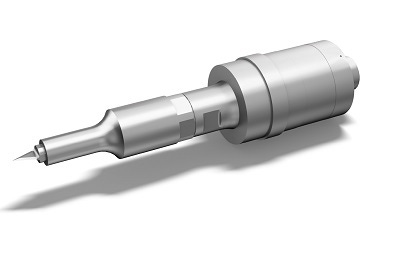Resonant ultrasonic systems offer superior processing option for milling and cutting brittle lightweight materials
They improve efficiency and quality, and in combination with industrial robots deliver tolerance similar to those for machine tools.
August 18, 2017

The latest resonant ultrasonic systems from German companies Weber Ultrasonics and Hufschmied Zerspanungssysteme for milling and cutting brittle lightweight materials can reportedly shorten processing times, extend tool life and improve accuracy by using significantly reduced process forces. With these systems, milling carried out using industrial robots remains within tolerance ranges similar to those for machine tools.
|
A carbon fiber reinforced plastic cut with a resonant ultrasonic system |
Lightweight materials such as fiber-reinforced plastics, composites and stacks with cores of foam or honeycomb structures frequently need undergo secondary machining processes to arrive at their final shapes. Ultrasonic systems for milling, cutting and sawing have proven adaptable and efficient processes for this.
The non-resonant systems generally used today, however, convert only about five percent of the input energy into actual vibrations. In contrast, the resonant ultrasonic systems jointly developed by Hufschmied Zerspanungssysteme and Weber Ultrasonics achieve an efficiency rate of 90 to 95 percent.
Among other things, these systems use significantly reduced process forces. In the processing of glass fiber and carbon, for example, the material removal rate is higher, resulting in higher material throughput and reduced machine working time. In addition, the tool life is increased through decreased strain or deformity of the tools.
Greater processing accuracy can also reportedly be achieved in ultrasonic milling with the new resonant systems. Delicate workpieces, for instance, can be manufactured with gantry systems. Furthermore, it is possible to use industrial robots in combination with resonant ultrasonic processing as economical and flexible alternatives for the implementation of automated production processes.
About the Author(s)
You May Also Like





